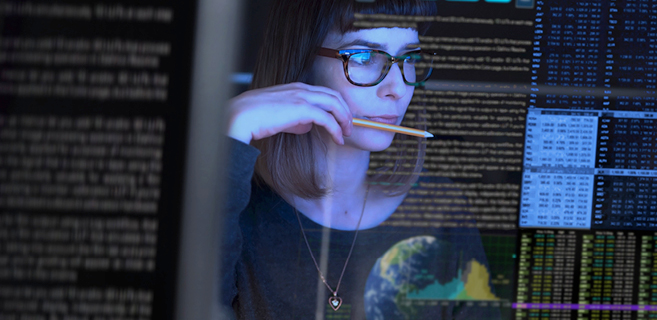Digital transformation is redefining risk management, offering unprecedented opportunities for efficiency and effectiveness. Ben Fox, Digital Strategy Lead at Liberty Specialty Markets, delves into six nascent technologies poised to revolutionise the field, exploring how each of these technologies can enhance risk management and provide practical steps for implementation.
In many ways, risk services in insurance have become increasingly sophisticated, with a focus on science-backed risk improvement recommendations, and developments in best practice in process safety and other areas. However, traditional practices such as boots-on-the-ground surveys still dominate. These surveys are labour intensive, requiring many hours of travel, and often multiple days on site, with multiple people involved; insurers are cognisant of the costs involved and therefore typically opt to visit a client premises just once every 2-3 years. This results in the generation of lengthy and cumbersome reports, which may be out-of-date within days of their publication. Digitalisation is disrupting this landscape, moving towards more dynamic and continuous risk assessment. Proactive risk managers should explore the capabilities of the following six technologies.
Flood Forecasting
One innovative service offered by LSM over the past couple of years is flood forecasting, which has emerged thanks to recent technological advancements as a critical tool in proactive risk management. LSM, through its partnership with Previsico, overlays a client’s property portfolio onto the Previsico forecasting model. This delivers early warnings to local and central personnel, enabling preventative measures that can help to reduce the likelihood and severity of losses. Some businesses already use flood forecasting to manage their exposure, often also augmenting this with the deployment of sensor devices on at-risk premises. In time we can expect to see more sophisticated risk managers interconnecting flood alerts from forecasting and/or sensors with localised defences for automatic intervention and prevention of loss.
To leverage flood forecasting technologies effectively, businesses must start by identifying assets at risk. This involves a thorough understanding of portfolio vulnerabilities beyond standard flood maps, considering past incidents and near misses. Next, integrating early warning flood alerts into emergency response plans ensures actionable measures can be taken swiftly. Enhancing this service with sensing devices provides an additional layer of detail, allowing for automatic deployment of flood defences when necessary.
The Internet of Things (IoT)
As we use sensing devices to assist in the prediction and prevention of floods, we start to move into the territory of the Internet of Things (IoT). It is, of course, necessary to measure and monitor other risks, and IoT technology is transforming risk management by connecting various devices to the internet, enabling remote monitoring and interaction. Smart home devices, such as thermostats and programmed lighting, are commonplace. There are now a range of devices available to help businesses understand risks to their operations in a new light, such as monitoring electrical output, heating, cooling, water, and fire detection systems.
To capitalise on IoT, organisations should first triage the hazards and loss potential facing their businesses; getting clarity on which risks can have an outsized impact on business performance is key to identifying where devices should be deployed. Real-time alerts, trend analysis and benchmarking can prevent losses before they occur, while interconnecting disparate IoT devices can create near real-time digital representations of assets, also known as a digital twin.
Digital Twins
A Digital Twin provides a live, interactive representation of a physical asset, offering significant advantages in risk management. In the future, they have the potential to replace traditional insurance submission documents by presenting detailed, interactive models of facilities. For instance, instead of extensive descriptions of a sprinkler system, a Digital Twin can visually represent this detail for underwriters and engineers to use, allowing them to determine risk quality, provide insurance quotes and recommendations for continuous improvement.
As another example, instead of simply offering insurers aggregated information on claims experience, a Digital Twin would allow risk managers to communicate their overall health and safety performance. Using a 3D model of their premises, they could demonstrate, for example, the exact locations in which they’ve had challenges with slips and trips over the past 12 months and exactly what they’ve done to reduce the number of incidents and accidents over the period.
These interactive models facilitate better communication and collaboration between risk managers and insurers, transforming the dynamics of the partnership.
Wearable Technology
Wearable devices, which have already gained immense popularity in the health and wellness arena over the past 5-10 years, are also expanding into the risk management landscape. While technologies such as smartwatches have seen huge uptake in adoption, other, more niche manufacturers are offering devices that can monitor collisions, hand-arm vibration, noise, slips and trips, amongst other risk factors, offering real-time alerts.
Not only do these devices prompt immediate action in hazardous situations, but they also offer businesses the opportunity to collect advanced analytics, which can be integrated into safety protocols to build dashboards and identify tasks, shifts and locations that pose challenges from a safety performance standpoint. This information has the potential to reveal safety performance issues, prompting data-driven investigations, ultimately leading to improved safety management and reduced claims experience.
In time, we can expect wearables to interface with other smart systems, providing additional context to the findings of regular safety reviews and audits. For example, interfacing with a digital scheduling tool might reveal that there are more incidents on shifts where there is an above average number of temporary workers, in-turn, prompting a review of the training delivered to temporary workers. Because of the integration between systems, these recommendations can be offered to risk managers without the need for manual analysis of the incident data.
Augmented Reality (AR)
AR enhances the user's field of view with computer-generated imagery and data. A common example is the head-up display in vehicles, which projects speed and navigation instructions onto the windshield. In risk management, AR can improve customer service by providing real-time product information, assist in de-escalating conflicts through on-the-spot coaching, and facilitate remote safety inspections.
Using AR for internal audits and safety inspections can reduce costs and increase the frequency of risk reviews. This technology enables a deeper understanding of safety performance across various locations, offering a practical solution for geographically dispersed businesses.
Artificial Intelligence (AI)
AI is set to become a general-purpose technology, integral to various aspects of risk management. Beyond current applications like chatbots, AI is expected to enhance each of the other technologies discussed here, providing highly sophisticated risk management support, and assisting in generating novel solutions to complex business challenges.
Taking business continuity planning as an example of a complex feature of insurance loss prevention, with a fully mapped-out supply chain, including volumes, prices, interdependencies, make-up capabilities, and lead-times, an algorithmic approach to business continuity planning will help risk managers better understand the complexities of their global supply chain and the resilience measures they need to implement to ensure downtime and business interruption is minimised.
Moreover, another AI use-case is the monitoring of social media and news developments to predict and prevent risks such as robbery and civil commotion, like in the case of a pre-meditated attack of an Oxford Street retailer in 2023, which was orchestrated entirely on social media platforms such as TikTok and Snapchat. Taking a proactive approach allows risk managers to deploy resources efficiently, mitigating potential losses.
Ultimately, the integration of digital technologies in risk management is not just a trend but a necessary evolution. Flood forecasting, IoT, Digital Twins, wearable technology, AR, and AI each offer unique benefits that can transform how risks are managed. By embracing these technologies, businesses can stay ahead of the curve, ensuring better protection and resilience in an increasingly digital world.

